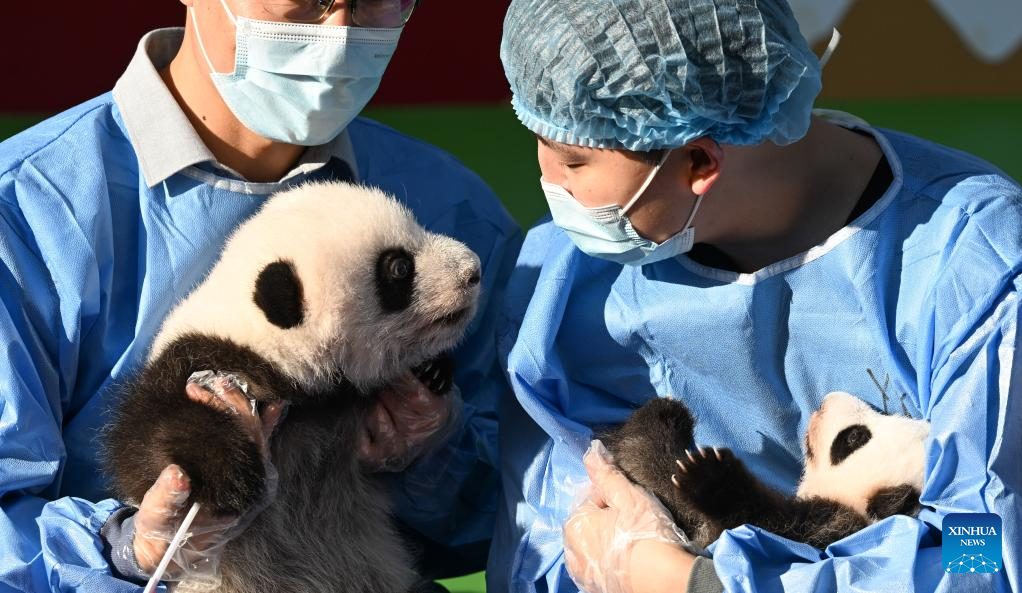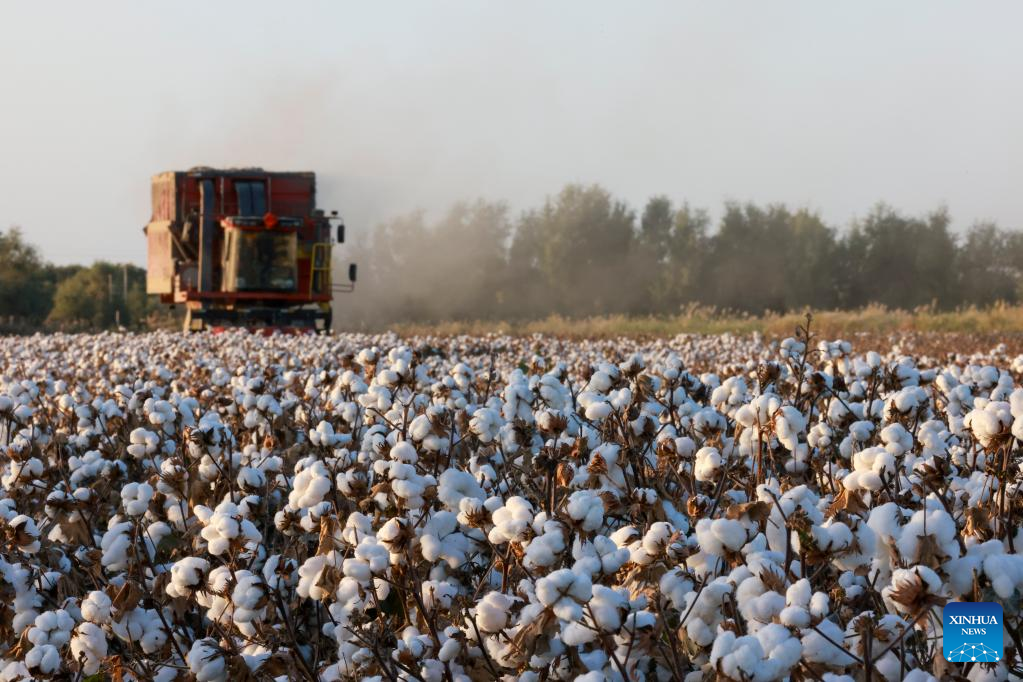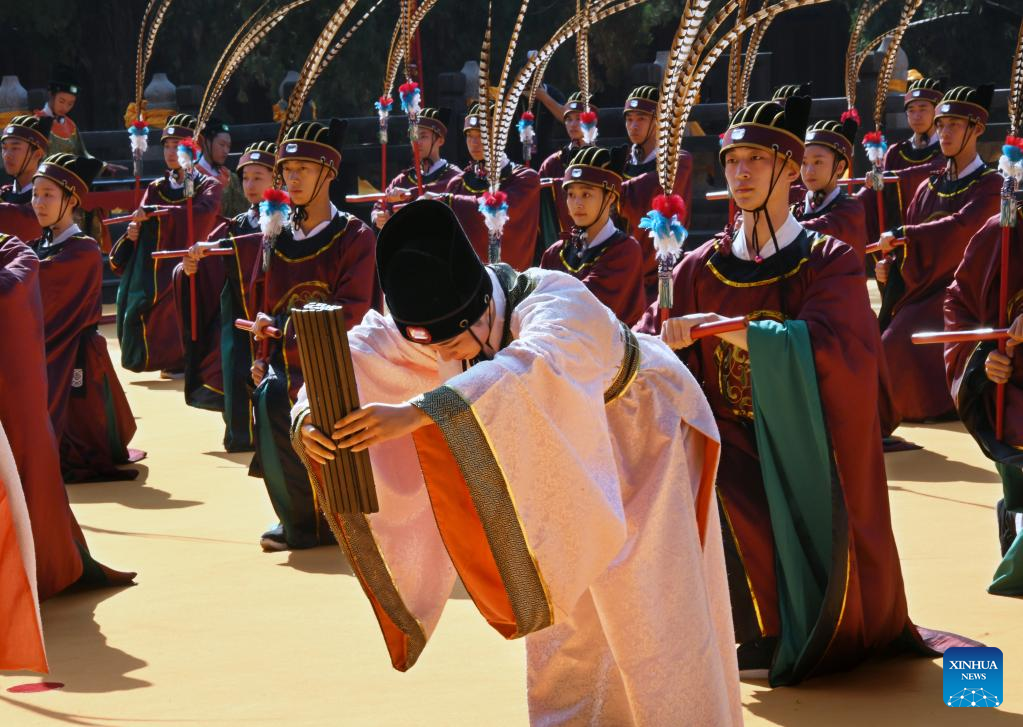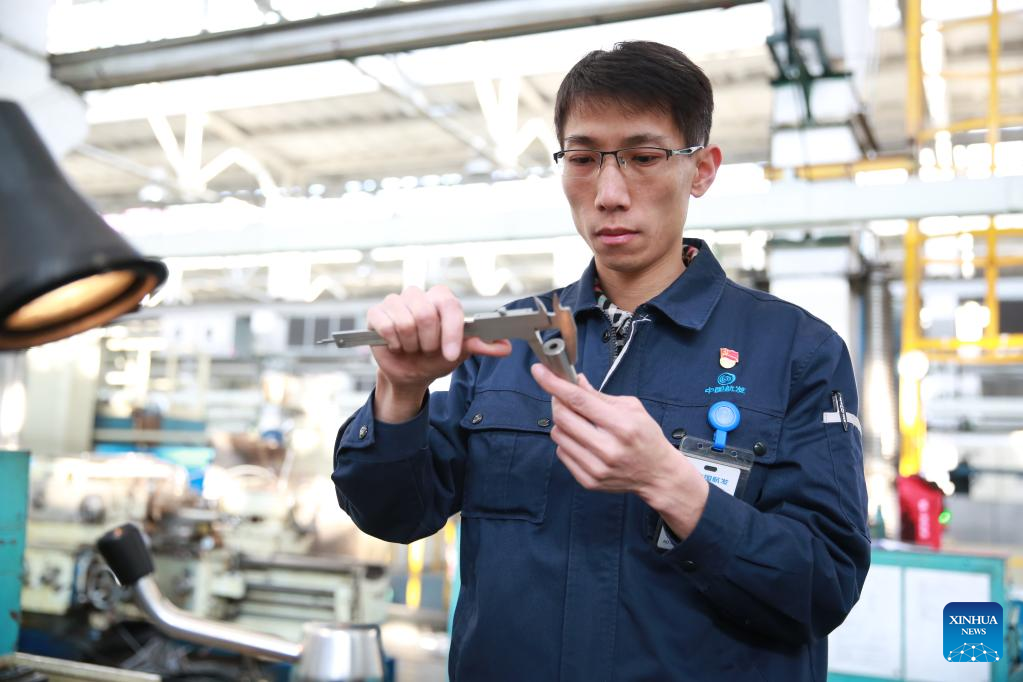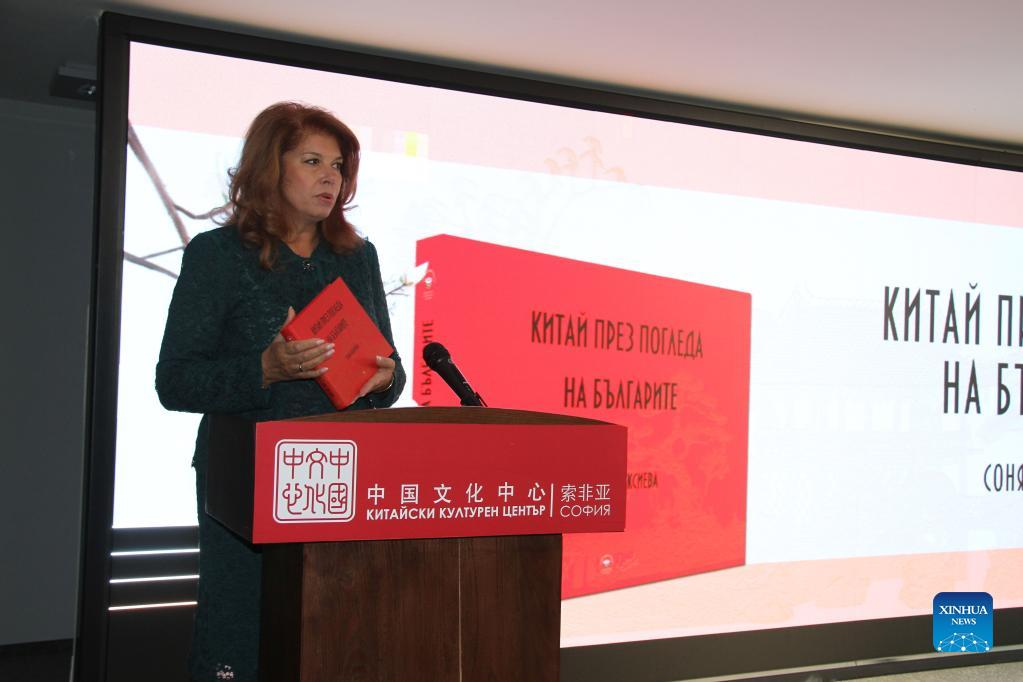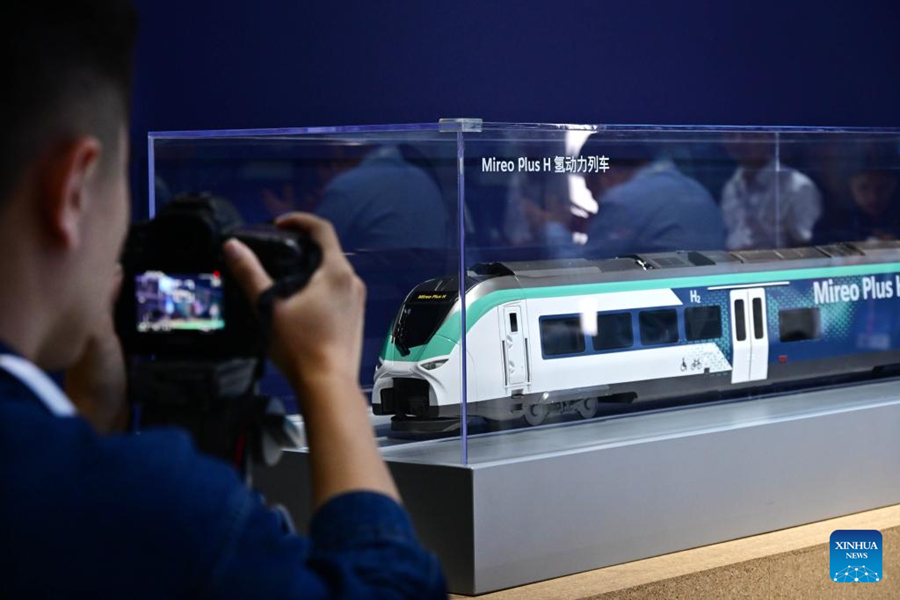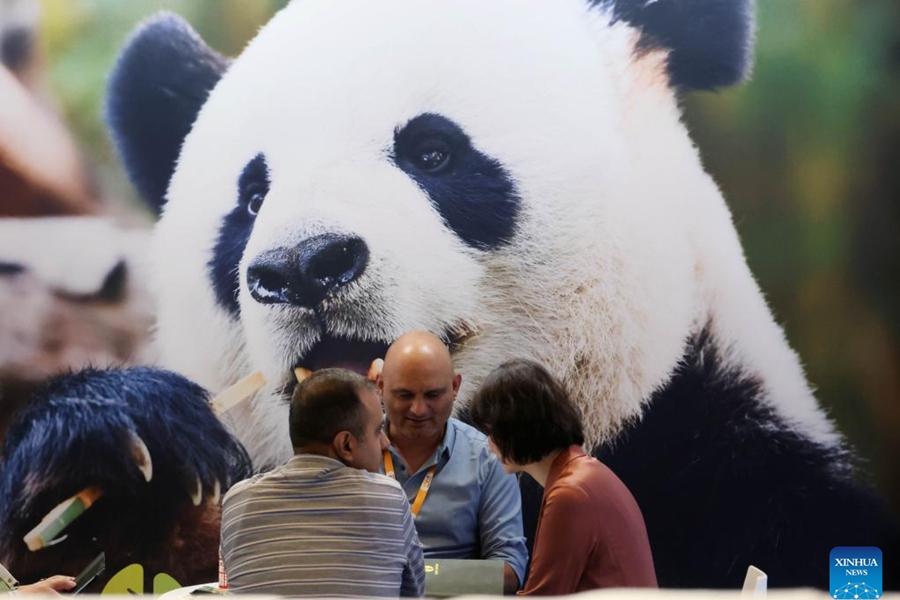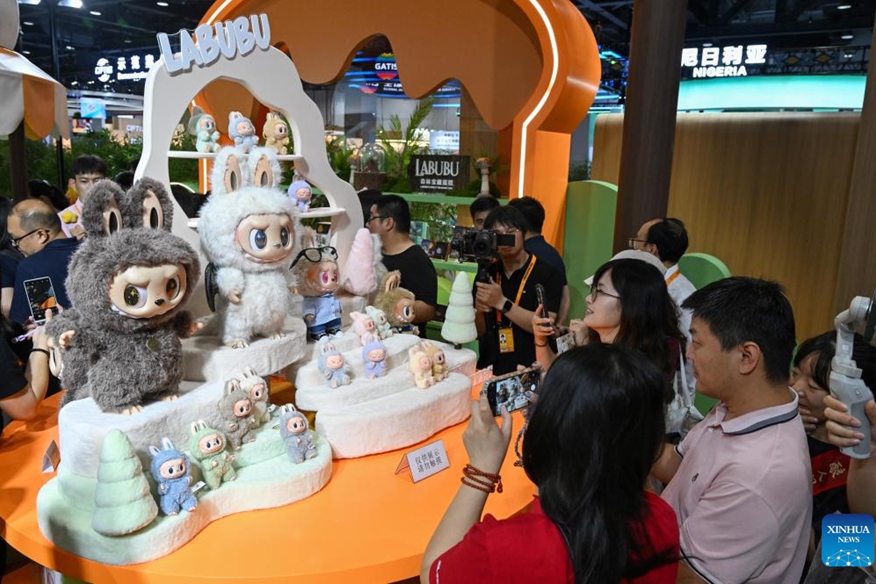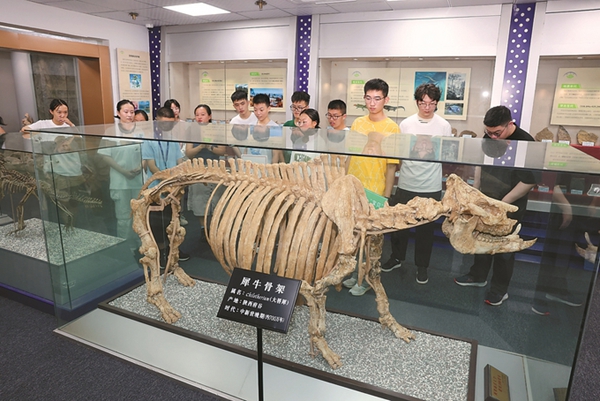
Freshman students visit the Museum of Earth Sciences at Nanjing University. (Handout via Xinhua Daily)
University museums in Nanjing cooperated to launch their first joint exhibition on September 1, which also served as the first class for freshmen.
This initiative marked the establishment of a university museum alliance in the city, with the 67 museums becoming members of the association. The alliance will pool resources to hold exhibitions with distinctive themes, and facilitate public access to the valuable collections and research achievements of university museums.
The 67 museums cover a diverse range of subjects, from university history to competitive academic disciplines. Despite their modest sizes, the museums often feature specialized or rare exhibitions.
The Museum of Earth Sciences at Nanjing University is home to more than 1,000 exhibits in a hall of over 200 square meters. The displays cover a period of 500 million years and include rare fossils from 220 million years ago, making the museum an ideal venue to explore the origins of early life on Earth.
Nanjing Normal University is known for the most extensive collection of animal and plant specimens in Jiangsu Province. There are about 10,000 specimens of large animals, including the species that are extinct, critically endangered or endangered, according to the museum’s curator Dai Jianhua. Notably, it houses specimens of the Chinese baiji dolphin, or Lipotes vexillifer, declared extinct in 2002. Currently, there are 39 taxidermied specimens of the Yangtze River dolphin worldwide, with five located in the university museum.
At Nanjing Agricultural University, the Museum of Chinese Agricultural Civilization is China’s first university-level museum dedicated to systematically collecting, researching and displaying the heritage of Chinese agriculture. A centrepiece of the museum is an ao, a flat iron plate from the Han Dynasty (206 BC-AD 220) and the earliest of its kind found to date. Lu Yong, executive deputy curator of the museum, explained that people only ate food boiled or steamed until the Han Dynasty when tools were used to process grain into flour and enrich the variety of people's daily diets.
Jiangsu Police Institute hosts China’s only museum themed around fingerprints. The China Fingerprint Museum, which contains a rare copy of China’s first complete and systematic academic study on fingerprints, allows visitors to trace the history and development of fingerprint science.
Other university museums also boast unique characteristics. The Museum of Nanjing University holds nearly 100,000 pieces of cultural relics and specimens of animals, plants and minerals. This collection spans a long period and a wide range of regions, making it one of the best university museum in terms of both quantity and quality.
Located at Nanjing University of Chinese Medicine, the Jiangsu Museum of Chinese Medicine displays an abundance of traditional Chinese medicine devices, medical literature and specimens of medicinal herbs, showcasing the long history of traditional Chinese medicine.
Nanjing Audit University houses a currency museum, which includes China's first series of RMB banknotes.
The Jiangjunlu campus of Nanjing University of Aeronautics and Astronautics displays a variety of aircrafts, chronicling the history of aviation development since the founding of the People's Republic of China in 1949.
Southeast University's Sipailou Campus is home to a memorial hall dedicated to Chien-Shiung Wu, a leading physicist and also an alumnus of the university.
The history of university museums in Nanjing dates back to 1915 with the establishment of the Nanjing University Biological Specimen Museum, one of the earliest and most distinctive biological specimen museums among China’s universities.
According to researchers, there were only six university museums in Nanjing before the launch of the reform and opening up. Over the years, university venues for animal and plant specimen collection and cultural relics have transformed into museums, making Nanjing one of the cities with the highest number of university museums in the country.


